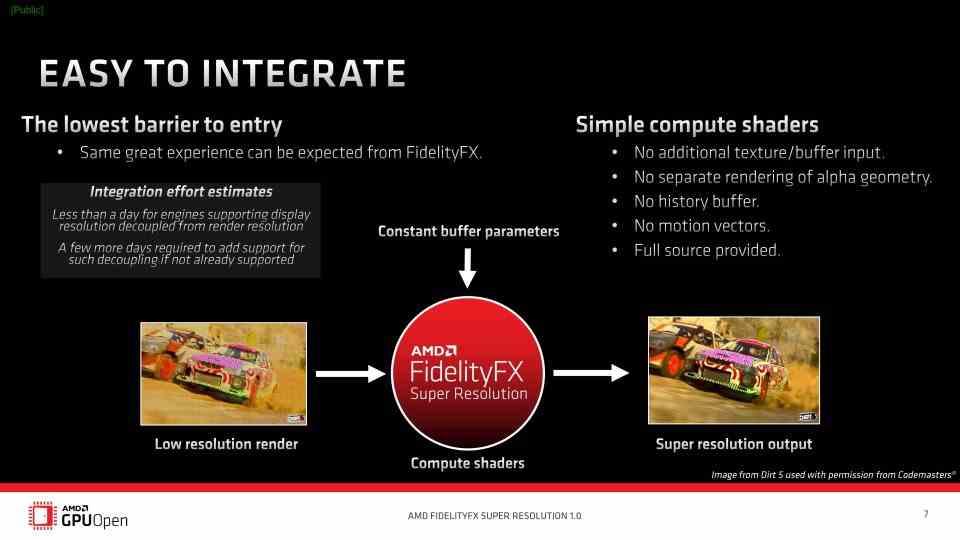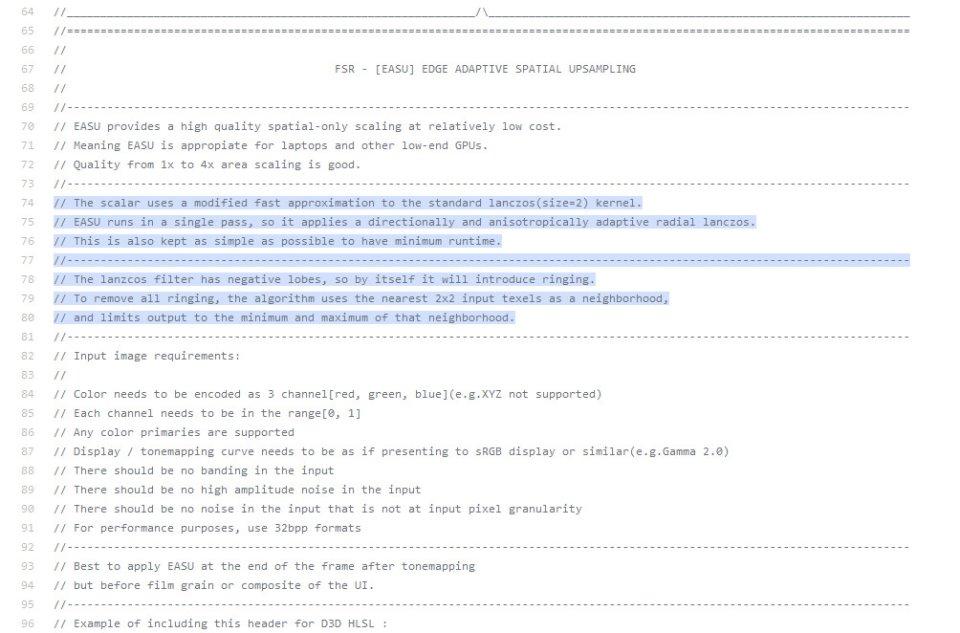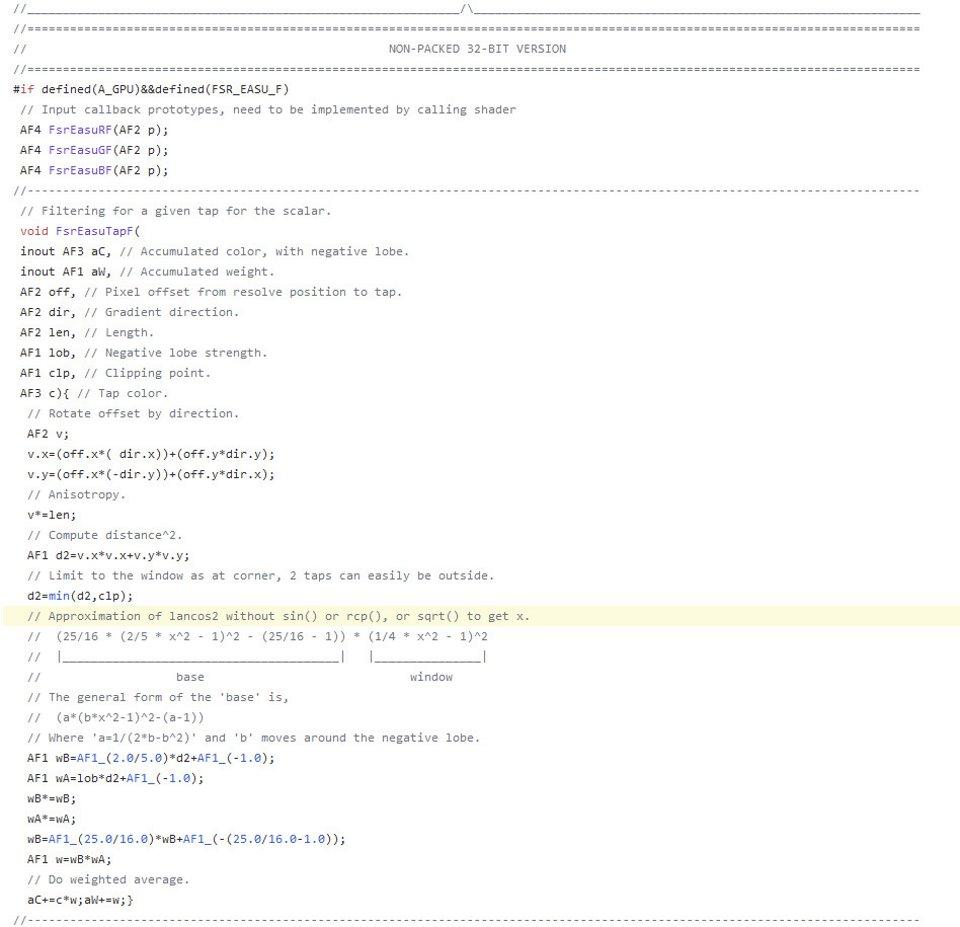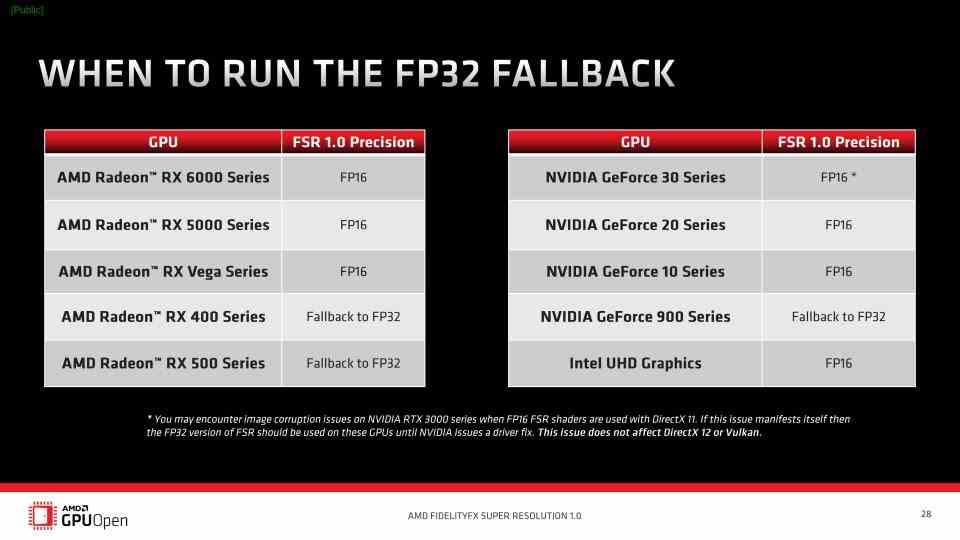
We have said it here many times, the spearhead of NVIDIA against AMD in terms of GPUs is concerned is the DLSS, which bases its strength on exploiting to the maximum the calculation capabilities of the tensor units. Which are not found in AMD GPUs and this has led them to develop their FidelityFX Super Resolution with a totally different approach than NVIDIA. Not only in the nature of its algorithm, but also in the way it is deployed.
AMD publishes the source code of its Fidelity FX Super Resolution

The main advantage of FSR over NVIDIA DLSS is that as it is not an artificial intelligence algorithm, it does not require a learning period and subsequent inference. This allows deploy it in all games directly And while it’s not as good as NVIDIA’s DLSS, it’s ideal for not just any game, but any AI-drive-less GPU to boost its frame rate at the highest resolutions.
It is a totally agnostic algorithm in terms of brand and architecture, from which not only AMD GPUs, but also NVIDIA GPUs without Tensor Cores and video game consoles will benefit. Not only from this generation, but also from the previous one by running on FP16, allowing PS4 Pro to benefit from this algorithm. The fact that it works with any GPU is excellent news, as its easy adaptation is going to breathe new life into old GPUs in an era of total hardware scarcity.
In addition, it is already fully integrated in Unity and Unreal Engine, so the games you make with those engines will already have FidelityFX Super Resolution integrated in the code.
New technical details have been leaked


The comments in the source code of the FidelityFX Super Resolution give us new information about the operation of the algorithm, which not only does not use AI, but is also not based on temporality or information from previous frames. The information we were missing? Know which algorithm you use to obtain a higher resolution version of the image, which has turned out to be the Lanczos algorithm, one of the most powerful in the world of linear algebra, mathematical discipline from which computer graphics are derived.
So now we have a totally rough idea of how the AMD algorithm works, what’s more, developers will be able to modify the code to adapt it to their needs at all times. Something that cannot be done with the NVIDIA DLSS as it is an undocumented black box, proprietary and of which we do not know its internal workings when NVIDIA keeps it with the maximum secret.




